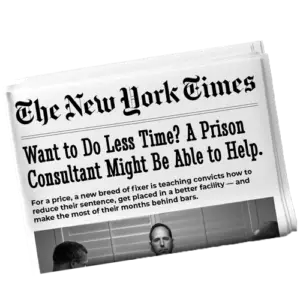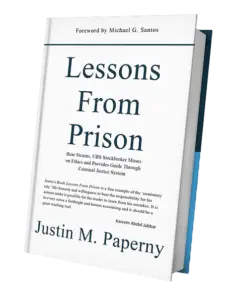The new directive, signed by Director William Marshall III, instructs case managers to prioritize home confinement for individuals who qualify under the First Step Act—and who don’t require the structure of a Residential Reentry Center.
This memo raises a deeper question: what is the point of keeping someone in federal prison who no longer needs to be there?
That’s the same question Michael Santos began asking decades ago. He served 26 years in federal prison. For most of that time, he wasn’t eligible for the halfway house or early release. So he built a record instead. He earned degrees. Wrote books. Created programs. Tracked every decision.
In 2015, two years after finishing his sentence, he published an article in the Hastings Law Journal titled Incentivizing Excellence. In it, he wrote:
“America’s prison population has soared since the early 1970s… Recidivism rates show that the longer we expose people to ‘corrections,’ the less likely those people become to emerge as law-abiding, contributing citizens.” (66 Hastings L.J. 1549)
The May 28 memo reflects that same reality. If someone has earned time credits, developed a clear release plan, and built a record that supports supervised reentry, they should be moved. This isn’t about leniency. It’s about reducing risk by avoiding unnecessary delay.
Michael wrote:
“Rather than waiting for calendar pages to turn, we should incentivize people in prison to pursue a path that will lead to their emergence as law-abiding, contributing citizens.” (66 Hastings L.J. 1551)
That’s why we built PrisonProfessorsTalent.com. It’s not enough to complete a class. You need a file that shows measurable progress—something a judge, probation officer, or case manager can rely on. No one is going to build that file for you.
We’ve seen how this strategy works. In Blog #2, I wrote about Tracii Hutsona. She built a full release plan. She tracked her First Step Act participation. She taught classes in prison. She published her progress. The result? Eleven months off her sentence and a full year in the halfway house.
That didn’t happen because the system showed her mercy. It happened because she gave the system something to respond to. A retired BOP executive said it best during one of our webinars: “What are you doing to make it in a case manager’s own interest to help you?”
This new directive points in the same direction. But it only works if your file gives stakeholders the tools they need.
During the COVID pandemic, over 15,000 people were transferred to home confinement. Fewer than 25 were returned to prison for new criminal conduct. That’s a recidivism rate of 0.0017%.
Michael predicted this outcome years ago:
“We should measure the success of our prison system by the outcomes it produces.” (66 Hastings L.J. 1549)
The outcomes are clear. Delaying release does not reduce risk. Creating a merit-based pathway does.
Ask yourself:
- Does my file support a transfer to home confinement?
- Have I submitted a written plan with verified housing and employment?
- Have I documented what I’ve done to earn the move—not just why I want it?
This isn’t about potential. It’s about evidence. Staff aren’t going to guess. They will act if you give them something solid to act on.
What are you submitting today that makes it easier for someone to say yes?
We’ll walk through the BOP directive, the strategy Michael pioneered, and the specific actions you should take before your name ever comes up for review.
Justin Paperny



